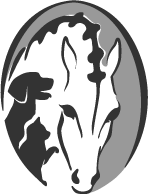Let’s Talk Bloat – GDV
 No I’m not talking about the way you feel after you’ve taken a dive head first into a gallon of ice cream or eaten an entire pizza pie, I’m talking about the terrible condition that can affect animals of all shapes and sizes. Gastric Dilatation Volvulus (GDV) aka bloat, is a serious condition that occurs more often than we realize.
No I’m not talking about the way you feel after you’ve taken a dive head first into a gallon of ice cream or eaten an entire pizza pie, I’m talking about the terrible condition that can affect animals of all shapes and sizes. Gastric Dilatation Volvulus (GDV) aka bloat, is a serious condition that occurs more often than we realize.
What Is GDV?
Gastric Dilatation is, simply put, the filling of the stomach with a great deal of air. Now you may be thinking that this is a normal process that occurs when we eat, and you’d be correct. The amount of air in this condition, however, is much greater than the bits we swallow throughout the course of eating our afternoon meal. In addition, animals aren’t able to express the abdominal discomfort they might be having from any bloating, making our job as fur parents that much more important.
What Does The “V” Stand For?
The V stands for volvulus. A volvulus is a twisting of an organ on top of itself. In the case of GDV, the stomach can flip over and actually tie off blood supply to the stomach. When the stomach is deprived of blood, the tissue rapidly begins to die, making this condition much more dangerous. An expanded stomach also puts pressure on the diaphragm, which then inhibits the lungs from full expansion. When breathing is impaired, the rest of the body suffers due to lack of oxygen going to all other tissues, leading to even more tissue death.
How Does This Happen?

There isn’t much warning when it comes to bloat. One thing to watch for is the way your animal eats. It has been suggested that high feeders can contribute to bloat incidence. Those that eat rapidly without coming up for a breather tend to gulp in greater amounts of air. A slow feeder may help decrease the rate at which your animal eats, as well as doing multiple feedings each day rather than one big helping daily. Some have noticed that older animals are more likely to experience GDV, perhaps because the tissue isn’t as elastic as it once was. Animals that come from a line where bloat has happened before also have an increased chance of experiencing the condition themselves. Lastly, certain breeds are more prone to bloat, especially those that are deep and narrow chested, such as the Doberman, Setters, and Great Danes.
Early Symptoms Of GDV:
- Distended Abdomen
- Restlessness
- Hypersalivation
- Unproductive retching
- Trouble Breathing
What Can Be Done?
If you suspect your animal of GDV you need to get them to a veterinarian immediately. The sooner he/she gets treated, the greater odds of having a better outcome. Your vet will probably do an xray to verify GDV and then there are several routes that can be taken depending on the specific situation. Some animals require a needle to be inserted into the abdomen to release the air, others have tubes inserted, and then some require more in depth surgery where the volvulus is untwisted and put back to normal. Animals that have suffered bloat do have a higher likelihood of recurrence.
Prognosis:
Depending on the rapidity at which your animal is treated, mortality rates can be low. Even those treated early however, can have up to a 30% mortality rate.
Prevention:
There are several theories on ways bloat can be prevented, here are just a few:
- Be aware of symptoms if you own a susceptible breed
- Use a slow feeder
- Feed multiple meals daily
- Keep your animal calm and help relieve anxiety
- Do not play for up to an hour after eating
- No vigorous exercise or excitement two hours after eating
- Research the best food for your breed
What we know is that GDV is a life-threatening condition, and if your animal exhibits any signs of it he or she needs to be taken to your veterinarian immediately!
Sources:
- http://pets.webmd.com/dogs/gastric-volvulus-bloat-dogs
- http://www.peteducation.com/article.cfm?c=2+2090&aid=402
- https://www.acvs.org/small-animal/gastric-dilatation-volvulus
- http://www.merckvetmanual.com/mvm/digestive_system/diseases_of_the_stomach_and_intestines_in_small_animals/gastric_dilation_and_volvulus_in_small_animals.html?qt=dilatation%20volvulus&alt=sh
Photo Credit:
Bloat at The Seas with Nemo & Friends via photopin (license)
Stomach Pic for Food Poisoning Thingy via photopin (license)




Leave a Reply
Want to join the discussion?Feel free to contribute!